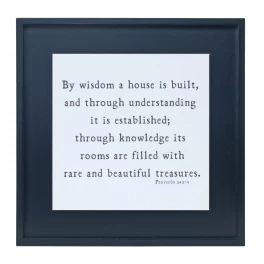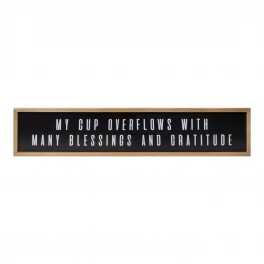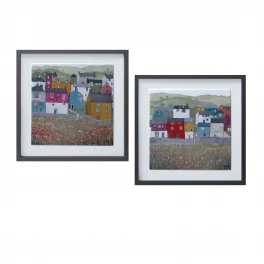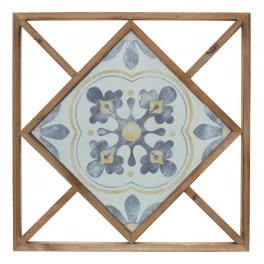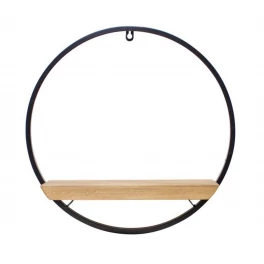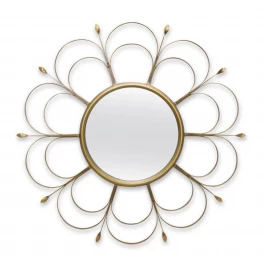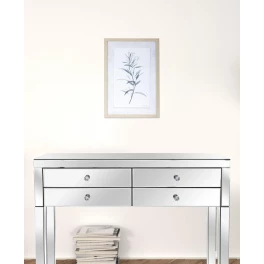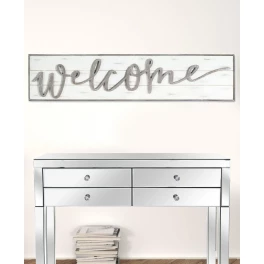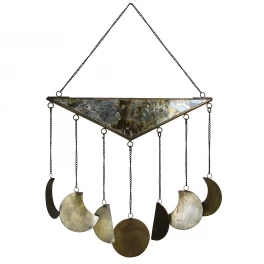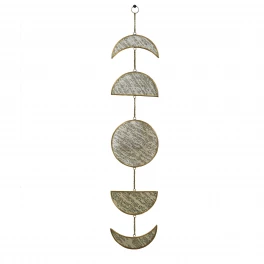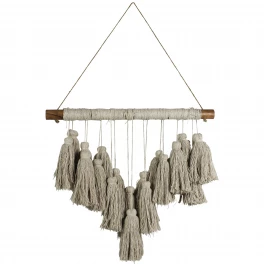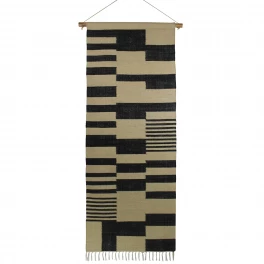Have you ever wanted to hang something, say a mirror or painting, but weren’t sure how to do it because the object was heavier than you expected? Perhaps you know that studs are your best option for hanging heavy objects, but what if the studs aren’t where you need them to be? You’re left needing to know how to hang a heavy mirror on drywall or plaster.
I recently faced this very problem thanks to a Christmas gift of a fairly heavy mirror for the bedroom. Naturally, its dimensions didn’t work with the wall studs, so I had to figure out how to hang something this heavy without the help of studs. The key is to have the right hardware, the right tools, and of course someone to help you lift the darn thing. Here are your step-by-step instructions for hanging the next heavy object that comes your way.
Step 1: Gather Your Tools
To hang a heavy picture, you’ll need the following tools:
- Drill and drill bits. If you have a screwdriver attachment, that’ll also save you some elbow grease.
- Stud finder. If you haven’t already checked for studs, a stud finder or stud sensor is a helpful (and fairly inexpensive) tool to have on hand. You can always go the old-fashioned route of knocking on the wall listening for studs, but a stud finder is a bit more precise and a lot easier on the knuckles.
- Measuring Tape.
- Level. A level is also going to be super helpful for making sure the mirror is, well, level. It’s also an inexpensive tool you can grab at the hardware store, or you can just get it as an app on your phone. Who knew?
Step 2: Figure Out What Hardware You Need
A couple of factors are going to come into play in determining what kind of hardware you need to hang your heavy mirror:
What kind of wall do you have?
If your house was built in the 1950s or later, your wall is probably made up of sheets of drywall nailed directly to the wooden studs and then covered with a layer of textured drywall compound.
If you have an older home, you may have plaster and lath walls. While great for absorbing noise, this older construction tends to crack and may not be the sturdiest base for your mirror.
To find out your wall type for sure, stick a small tack into the wall. If it pokes through , you’ve got drywall.
How heavy is the picture or mirror you want to hang?
Go ahead and weigh the object you want to hang so you know what kind of picture hanging hardware you’ll need. Here are some of your options:
- Hollow-Wall Anchors. Also known as Molly bolts, these guys can hold about 50 pounds. As the name suggests, they’re for walls that are not solid, like drywall sheets.
- Expansion Anchors. The weight these can hold depends a lot on the size of the anchor as well as how ribbed they are.
- Threaded Drywall Anchors. A bit stronger than expansions anchors, especially if you opt for the metal type. Check the packaging for how much they should be able to hold.
- Toggle bolts. These nifty anchors may be your new go-to for hanging heavy objects on drywall. Their wings will lock into place behind the drywall, and even the smallest of them can hold a substantial amount of weight.

Photo by Mikbiz on Shutterstock
Step 3: Get Ready to Hang the Mirror or Picture
Once you have the right hardware on hand, knowing how to hang your heavy mirror isn’t that much different than how to hang a picture. You’ll want to determine where on the wall and how high you want the mirror. Mark the top edges with a pencil, and be sure to have a helper on hand to assist with the extra heft of the mirror. Use a tape measure to determine where the mirror’s hanging hardware is in relation to the outer edge of the mirror you’ve marked. Most new pieces will have hardware already attached to the back, in which case you can skip ahead to Step 5 (Woohoo!).
Step 4: Attach Hanging Hardware to Your Mirror
If you’re hanging an older mirror or painting, you may need to add your own hardware to the back. Hanging a heavy mirror with wire is a solid option—look for the heaviest gauge of picture-hanging wire you can find to help with the weight. You’ll also need D-rings and small screws.
To figure out where on the mirror to mount the hardware, measure the height of the mirror and divide by five. The resulting number is the distance to measure from the top of the mirror. Here, you’ll attach the D-rings with screws, making sure the D loops face each other across the back of the mirror.
To add the hanging wire, measure the mirror’s width. Double this number and add six inches or so. Then, fold the wire in half, stringing it through the D-rings. Use the extra length to wrap the wire around itself to secure each edge.
Step 5: It’s Mirror-Hanging Time
At this point, you should have pencil marks for where you want the mirror and where you need to screw in your anchors to make that happen. Use a level (either on the mirror itself or on a piece of painter’s tape applied between the two projected holes) to double-check hole placement. If the mirror has a wire, hold it up to see how much drop the wire has, and adjust your pencil marks accordingly.
Most drywall anchors will require a pilot hole, so when you’ve measured twice, drill a small hole for each anchor. From there, you should be able to screw in your anchor of choice until it’s flush with the wall. Finish it off by putting a wide-headed screw into the anchor. If you’re using a toggle bolt, push the wings through your pilot hole before screwing it in. Repeat on the other side.
Go ahead and mount your mirror using its attached hooks or wire. If you’re worried about the bottom edges of the mirror hitting the wall, small rubber bumpers added to the bottom corners will give you some piece of mind.
Got more mirrors to hang? House Tipster’s got your back with this guide to decorating with mirrors.




